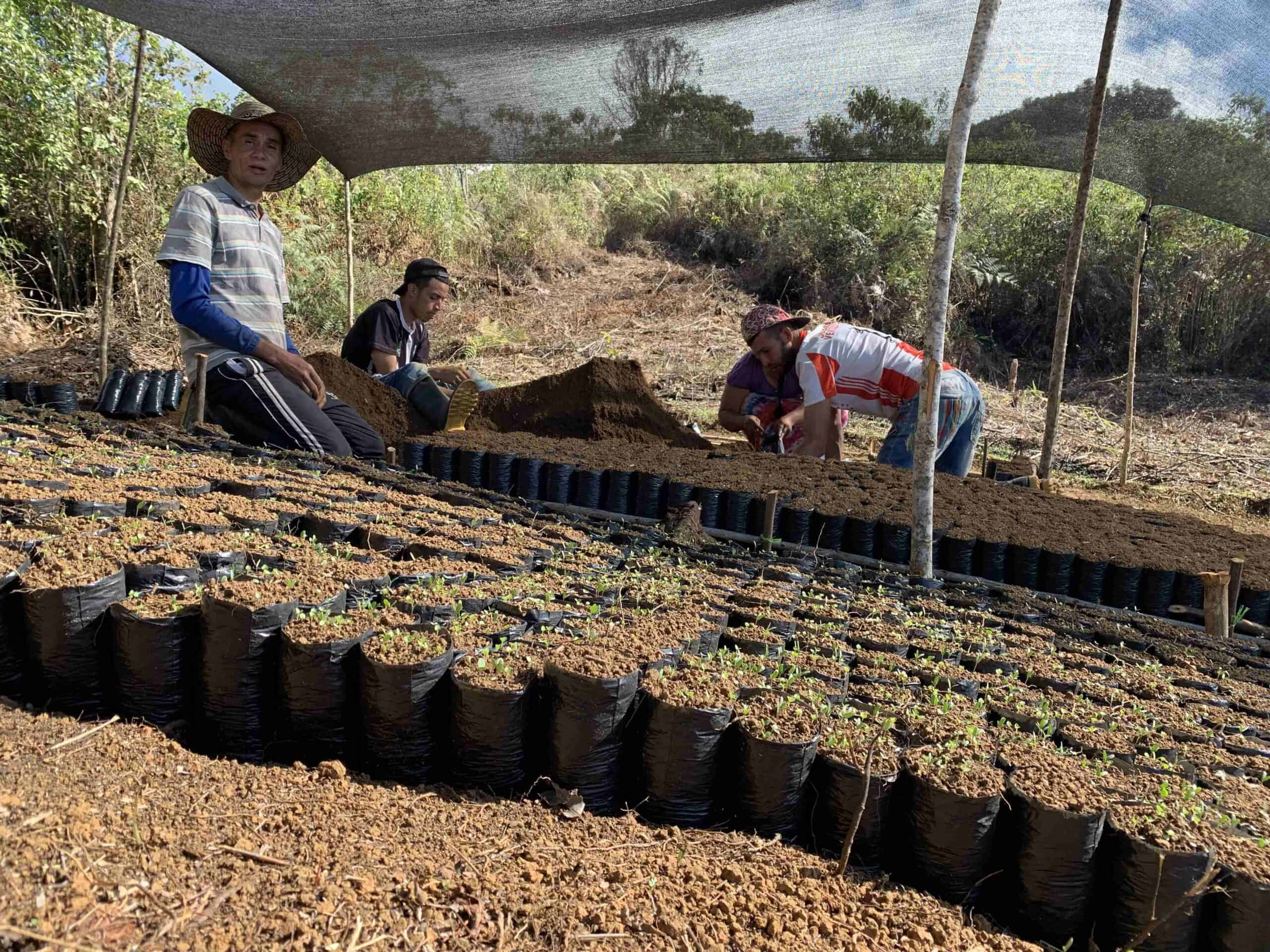Near Santa Fe de Antioquia, one of the oldest cities in Colombia, Gabriel Gutierrez and Milena Quiroz grew up, met and started their family. In their farm, La Divisa, they produce premium Castillo and Supremo beans. At 2,050 Meters MLS, with abundant water from the river and lots of shady mountains they have been following the ways of their ancestors while continuing to learn and perfect their craft.

Finca La Loma
Juan Carlos is a 4th generation coffee grower from Ciudad Bolivar, Antioquia. He has coffee running through his veins; his Great Grandfather, Lisímaco Guerra, started growing coffee in 1913. Juan Carlos’ farm, La Loma, sits at 2,000 meters MSL (6,561ft) in a small village called Los Farallones.

Finca Cañaveral
Jhon Jairo is part of a family that has been cultivating coffee for over 70 years. His farm “Cañaveral” is part of the land where he was raised along with his 13 siblings, 5 of which are also expert coffee farmers.

Barbosa, Antioquia – October 2021
By the time we got to “La Teresita” it was almost lunchtime, we know how Colombian coffee farmers go above and beyond when it comes to feeding their guests and we didn’t want to impose on them, so we opted to eat something before arriving at the farm.

Fredonia, Antioquia – November 2021
Early in the morning of a beautiful Thursday of November 2021, my wife (Marcia Miles) and I were on our way to pick up Miguel Echeverri, Hatillo Coffee’s co-founder and Chief Quality Officer (CQO), at his apartment in the neighborhood of “El Poblado.” With Miguel on board, we left the city of the eternal spring (aka. Medellin) headed for Fredonia.

Honey Processed Coffee
The term “honey,” as it relates to a method of processing coffee beans, doesn’t have anything to do with honey produced by bees, as one may naturally assume. However, the honey processing method gives the parchment coffee a honey-like color and a more complex cup profile than washed processed beans.

Finca El Jardin
Using artisanal methods, in his El Jardin farm, Ignacio knows how to grow and process specialty coffee, but he also highlights the importance of the environment around the coffee trees.

Finca La Teresita
At 1,650 meters MSL, La Teresita coffee farm is only accessible by foot; all the delicious 100% Colombian coffee beans produced there must be brought down the mountain by a mule which only adds to the beauty of the process.

Finca Alto Bonito
The Specialty coffee from Finca Alto Bonito is highlighted by its unique location near the small town of Jardin, Antioquia – Colombia. The farm sits surrounded by mountains and has a front seat view of the Farallones de Citara, one of Colombia’s highest mountain ranges, part of a protected forest reserve.

Finca Piedra Larga
“Piedra Larga” is a very special farm to us. It is the farm where it all started. Located in Barbosa – Antioquia, Piedra Larga’s foggy mornings, creeks, and altitude result in a rich soil ideal for specialty coffee growing. The farm sits at 4,921 ft (1,500 meters) MSL. “Piedra Larga” used to be a sugar mill, and even though it had coffee trees planted around the farm, the main objective wasn’t to produce coffee.

